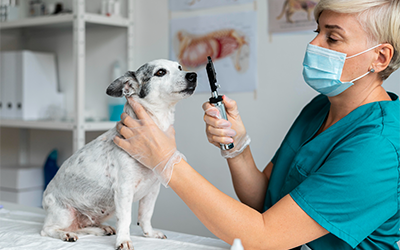Microchipping for Exotic Pets: What You Need to Know
 Nothing is more important for pet owners than keeping their precious pets safe! Microchips are often thought of as a dog or cat item, but exotic pets can also enjoy the security of a permanent form of identification. We provide microchipping services for exotic pets here at Bloor-Kipling Animal Clinic to ensure they can be returned safely if lost. In this blog, we’ll examine why microchipping is so important for exotic pets, how the process works, and what pet owners need to consider.
Nothing is more important for pet owners than keeping their precious pets safe! Microchips are often thought of as a dog or cat item, but exotic pets can also enjoy the security of a permanent form of identification. We provide microchipping services for exotic pets here at Bloor-Kipling Animal Clinic to ensure they can be returned safely if lost. In this blog, we’ll examine why microchipping is so important for exotic pets, how the process works, and what pet owners need to consider.
Why Microchipping Exotic Pets is Important
If you have an exotic pet — such as a bird, reptile, rabbit, or small mammal — they are often more susceptible to being able to escape or get stolen. Conventional pet collars and tags will not be appropriate for these animals. Therefore, microchips currently serve as a trustworthy means of identification. Here’s what you need to know about why microchipping is a big help:
Lasting Identification: Unlike collars, which can come off, a microchip is embedded under the pet’s skin for its lifetime.
Greater chance of Reunification: If an exotic pet is lost and taken to a vet or rescue establishment, a microchip scan provides immediate reunification.
Deters Theft: Because microchips hold information about the owner, they can prevent stolen pets from being resold or rehomed.
Travel requirements: Most places require exotic pets to be microchipped for legal entry.
How Microchipping Works for Exotic Pets
Microchipping an exotic pet is essentially the same process as with dogs and cats, albeit scaled down for their size and anatomy:
Implantation: The tiny microchip (about the size of a grain of rice) is placed under the pet’s skin with a sterile needle. Implantation site differs by species. For example:
- Birds: Usually into the breast muscle.
- Reptiles: Placed under the skin in a method relative to the species.
- Rabbits & Small Mammals: Generally administered between the shoulder blades.
Registration: Once implanted, the pet owner’s contact information is entered into a national pet recovery database.
Reading for Identification: When a pet goes missing and is discovered, a veterinarian or animal shelter staff can scan the microchip to get the owner’s details and arrange a reunion.
Considerations for Exotic Pet Owners
Microchipping is a safe and effective form of identification. However, there are some things exotic pet owners should be aware of:
Select an Experienced Veterinarian: Exotic pets need special treatment. Our trained veterinarians at Bloor-Kipling Animal Clinic provide a safe and comfortable microchipping experience that includes the following:
Change Contact Information as Needed: If you move or change phone numbers, update your microchip registry.
How they are placed: For some species, you may need to sedate your pet to put a microchip; for others, you may not.
Routine Microchip Checks: At veterinary visits, ask that your pets be scanned for a microchip and that the chip works correctly.
Schedule a Microchipping Appointment Today!
Microchipping is a simple, safe, and effective procedure for protecting your exotic pet. Bloor-Kipling Animal Clinic: Most exotic animals can be microchipped here so that they can go home after being found.
Visit us today– and give your furry friend the care they deserve!
